 Leading Blog | Posts by Month |
 Leading Blog | Posts by Month |
01.31.09

LeadershipNow 140: January 2009 Compilation
Posted by Michael McKinney at 08:36 PM
01.30.09

Communication Crib Sheet for Crisis Times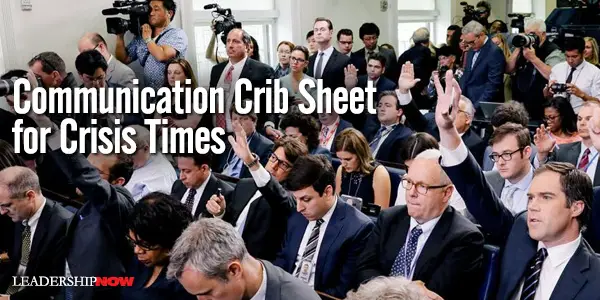
IN AN excellent series of special reports on Managing in a Downturn produced by the Financial Times, Paul A. Argenti, professor of corporate communication at Tuck School of Business, Dartmouth College, observes that “many companies flail by failing to act or by taking the wrong kind of action when communicating with distressed stakeholders.” People are eager to listen and by acting quickly and thoughtfully, “a company can build reputational capital and weather the storm to come out on the other side perceived as a long-term leader.” During a crisis, companies can uncover opportunity by adhering to a few simple guidelines when communicating with investors, employees, the press and the general public.
Posted by Michael McKinney at 10:45 AM
01.29.09

Out of Context: What Will Leaders of the Future Look LikeThe leaders of the future will be known for …
—Dave Ulrich
The Leader of the Future: New Visions, Strategies, and Practices for the Next Era
Posted by Michael McKinney at 05:05 PM
01.27.09

Newswire: Presidential Regrets? GHW Bush and Clinton Speak Out
Posted by Michael McKinney at 02:12 PM
01.26.09

You Can’t Order Change: Making Ethics and Compliance a Clear Competitive Advantage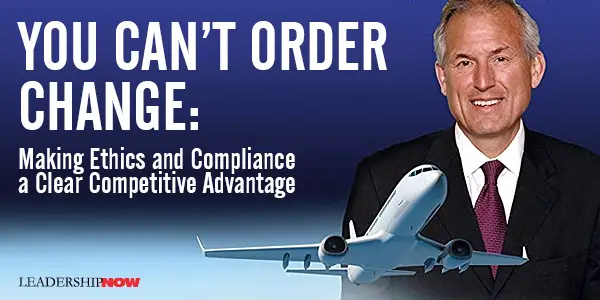
WHEN Jim McNerney became CEO of Boeing in 2005, change wasn’t an option. It was mandated. In 2005 Boeing was facing investigations into illegal business practices, there was the sex scandal, revenue was down, and key people were jumping ship. In short, it wasn’t the place to work. But even when everyone agrees that change is necessary – even vital – it doesn’t come easy. It still has to be approached in a careful and respectful way. You Can’t Order Change, by Peter Cohan, is about how McNerney brought about that change in Boeing. How he cleaned up the mess and changed the culture and revitalized the organization. Probably the biggest task that faced him was the quagmire created by years of costly ethical problems. He had to settle a lawsuit with the government and create a culture of ethics and compliance. This has to be done by example and system changes that encourage ethical behavior and compliance. He said in Boeing Frontiers, “I plan to make leadership development a focus across the company because I believe that as we strengthen our leadership capacities, we can have a positive impact on the company's overall performance. As I've said before, better leaders make better companies. And effective leadership, at all levels of an organization, is based on a foundation of trust, integrity, and escape-free compliance. As we turn up the gain in leadership-development training, we will embed in it an equal emphasis on how leaders can lead with ethics and integrity.” Cohan writes that McNerney made sure that ethics wasn’t a passing fad, but a value that had teeth in it. If the leaders of the organization “have not been behaving in a way that’s consistent with Boeing’s values, he expects them to change their behavior. And if they don’t meet McNerney’s expectations, they lose their leadership roles.” Step one for McNerney, of course, is getting the leaders to act ethically; to set the example. Cohan cites this statement from McNerney: We also realize it all starts with leadership. If an organization’s leaders don’t model, encourage, expect and reward the right behaviors, why should anyone else in that organization exhibit those behaviors? Companies have to take the hugely important step of driving ethics and compliance through their core leadership and Human Resources processes. This must be … and must be seen to be … a central part of the whole system of training and developing leaders and of the whole process of evaluating and promoting people. This is the key.” Critical also to this change is a system that supports and rewards people for getting results ethically and gets rid of people who don’t. Cohan writes, “McNerney let people know that he wanted them to discuss problems and not bury them.” If people didn’t talk about ethics and compliance, he would bring it up. “Ultimately, McNerney wants to avoid surprises about ethical problems that originate at lower levels. I know and you know … that one of the absolute perquisites for success in ethics and compliance is the belief that it is OK for people to question what happens around them.” McNerney’s methods and approach to change have gotten him dramatic results and they are worth studying. 
Posted by Michael McKinney at 01:35 PM

Attributes of a Boeing Leader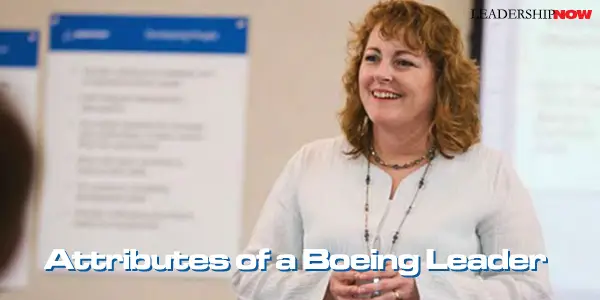
WHEN Ginger Barnes spoke to employees at a leadership development program at the Boeing Leadership Center, she said: Leadership is all about leaders teaching leaders and about relationships. We can execute the daylights out of anything, so “finds a way” and “delivers results” have always been strong traits. Where we need to improve is in the areas of “charts the course,” “sets high expectations” and “inspires others.” That is the case just about anywhere you go. To strengthen the culture of leadership and accountability within the company, Boeing defined its expectations for leaders as: A Boeing Leader:
Posted by Michael McKinney at 01:30 PM
01.23.09

A Downturn Provides the Ideal Opportunity to Force Hard Choices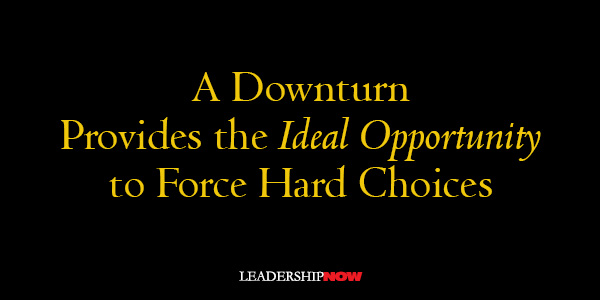
LONDON Business School professor Donald Sull writes in today’s Financial Times that we need to take advantage of the opportunities that are presented by the economic downturn: Major change efforts are difficult in the best of times, and many executives worry that a downturn will halt future progress or reverse any gains made to date. Indeed, in a downturn, managers too often scurry from fighting one fire to the next and thereby lose sight of the longer transformation effort.
Posted by Michael McKinney at 11:29 AM

Step One: Reality Check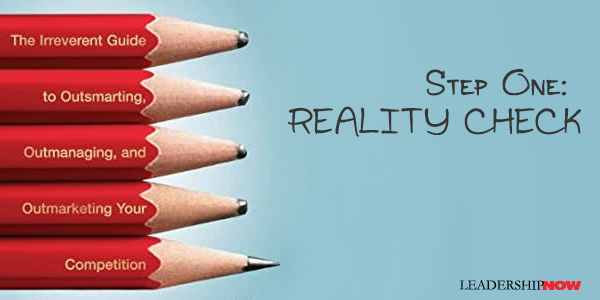 WE have written here that this is the season to rethink, explore, fine tune what works, discard what doesn’t and set a new course. Essentially what we need is a reality check. No longer can we skate by on surplus. Guy Kawasaki’s new book, Reality Check: The Irreverent Guide to Outsmarting, Outmanaging, and Outmarketing Your Competition, is a good place to begin.
WE have written here that this is the season to rethink, explore, fine tune what works, discard what doesn’t and set a new course. Essentially what we need is a reality check. No longer can we skate by on surplus. Guy Kawasaki’s new book, Reality Check: The Irreverent Guide to Outsmarting, Outmanaging, and Outmarketing Your Competition, is a good place to begin.
It would be unfortunate if the book’s heft – 474 pages – made it too intimidating to pick up because it’s full of great insights, clever thought, and often provocative ideas that will make you see things in a new way. I don’t recommend reading it from cover to cover. It’s not that kind of book. It’s more of a highly readable, reference tool that you’ll want to refer to again and again. Besides, unless you were born in this century, you’ll need some time to allow your brain to create some new circuitry. There aren’t any shortcuts given here. Often life and especially entrepreneurship is about grinding it out; sticking to what you believe in until it works. It’s not about sticking to your competition either. It’s about focusing on what you can do to add value to your customers and the world. Frank Sinatra famously said, “The best revenge is massive success.” What drives your competition crazy is your success. The 94 chapters are based on his highly regarded blog, How To Change the World. The topics cover everything from the start-up, maintaining, growing your business to communicating your message and surviving what comes your way. Some takeaways:
There’s more, but it would take 474 pages. Better get the book. 
Posted by Michael McKinney at 07:21 AM
01.22.09

Newswire: Warren Buffett on the Economy and Investing
Posted by Michael McKinney at 04:23 PM

What to Look for in a Team of AdvisorsIn 1976, Stephen Hess wrote in Organizing the Presidency that in choosing Cabinet members, while the notion of a Cabinet “type” can be overdrawn, there are qualities that the President should look for in public executives.Persuasiveness. “This is necessary in large, hierarchical organizations where leaders have limited control over personnel and where the tug of inertia may be considerable.” Personal stability. “This calls for a sturdy internal gyroscope, stamina, and the ability to work under pressure. Broad-gauged intelligence. “…ability to conceptualize, to see the policy implications and consequences of their actions.” Flexibility. “They must do so without losing site of the President’s ultimate goals.” A sense of duty. “Unlike the President and members of Congress, they are not elected. This means, paradoxically, that they must have an even sharper sense of responsibility than an elected official.” A thick skin. They “should be lightning rods for public unhappiness and, if they are doing their jobs properly, they will deflect from the President as much criticism as possible.” Patience and impatience. They must be able to “deal with endless procedures,” hearings and meetings and yet at the same time they “must prod their subordinates to do better and must use their impatience with the status quo as a constructive tool of management.” These qualities might well be considered when looking for any team of advisors.
Posted by Michael McKinney at 01:28 AM
01.20.09

The Top 5 U.S. Inaugural Speeches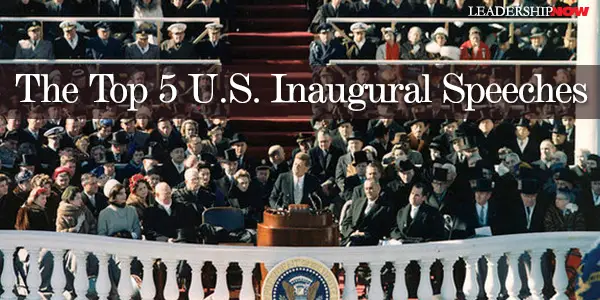
DAVID GREENBERG, a professor of history and of journalism and media studies at Rutgers University, offers his view of the five best inaugural speeches in the Wall Street Journal. “Over the decades, indeed, only a few have gained canonical status – for the sublimity of their prose, the eloquence of their delivery or the aptness of their message for a concurrent crisis.” I would place Lincoln’s short but powerful second inaugural address in 1865 as the best, but here is Greenburg’s list: 5. John F. Kennedy – 1961 “And so, my fellow Americans: ask not what your country can do for you—ask what you can do for your country.” 4. Thomas Jefferson – 1801 (First Inaugural Address) “But every difference of opinion is not a difference of principle. We have called by different names brethren of the same principle. We are all Republicans, we are all Federalists. If there be any among us who would wish to dissolve this Union or to change its republican form, let them stand undisturbed as monuments of the safety with which error of opinion may be tolerated where reason is left free to combat it.” 3. Franklin D. Roosevelt – 1937 (Second Inaugural Address) 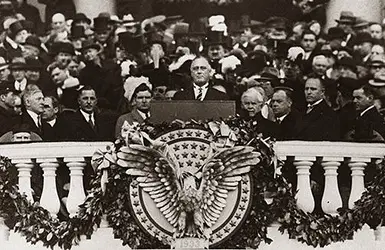 2. Abraham Lincoln – 1865 (Second Inaugural Address) “With malice toward none, with charity for all, with firmness in the right as God gives us to see the right, let us strive on to finish the work we are in, to bind up the nation's wounds, to care for him who shall have borne the battle and for his widow and his orphan, to do all which may achieve and cherish a just and lasting peace among ourselves and with all nations.” 1. Franklin D. Roosevelt – 1933 (First Inaugural Address) “This great Nation will endure as it has endured, will revive and will prosper. So, first of all, let me assert my firm belief that the only thing we have to fear is fear itself—nameless, unreasoning, unjustified terror which paralyzes needed efforts to convert retreat into advance.”
Posted by Michael McKinney at 01:08 PM

The Presidential Inauguration: Firsts and FactsSINCE 1901, all Inaugural ceremonies at the U.S. Capitol have been organized by the Joint Congressional Committee on Inaugural Ceremonies (JCCIC). They have provided us with a list of firsts and interesting facts about U.S. Presidential Inaugurations.
Posted by Michael McKinney at 09:06 AM
01.19.09

Hitting Your Goals by Knowing What Matters“The trouble with an overload of information isn’t just that it’s confusing. It’s that the data have conflicting implications,” writes David Apgar in Relevance: Hitting Your Goals By Knowing What Matters. Today, data is cheap so we make more of it. But in generating more of it, we unwittingly complicate our decisions. The problem is in determining what is relevant.Two tests help to determine the usefulness of any piece of information. First, is its specificity “because you can draw more conclusions from precise outcomes rather than vague ones.” And secondly is its relevance. “Relevance has to do with how well a piece of information tests your expectations.” Apgar suggests that while we have become used to less relevant data we have developed two bad habits. “Instead of devising a specific strategy to meet a financial goal like a sales or profit target, we’re increasingly tempted to enumerate requirements for meeting the goal…. Requirements are not strategies. An unlike strategies, there’s little to learn when they fail to work.” And then there’s our growing reliance on red herrings. “Red herrings are results that appear to confirm your plans but in reality are merely consistent with them.” We end up chasing after the wrong thing. It leads to an unintended use of the balanced scorecard. “It’s too easy for organizations to fill out balanced scorecards with lists of obvious requirements for success that resemble ingredients in a cookbook. The trouble isn’t that the ingredients may be wrong; it’s that they run so little risk of being wrong. As a result, they end up saying very little.” The strategy should look more like a recipe than a list of ingredients. There is little chance of the ingredients being wrong. You can execute the ingredients, but the recipe is what needs to be tested. Apgar offers a quick and efficient way to get the indicators that test strategic assumptions and devising better performance strategies. He writes, “A leader must both promulgate polices clear enough to test and be ready to change them. Clarity and a critical attitude are great virtues when combined. Instead of avoiding leaders with simplistic or nuanced approached to the world, organizations and countries alike need leaders who alternate between them.”
Posted by Michael McKinney at 09:21 AM
01.16.09

Maybe What You Need is a Little Disruption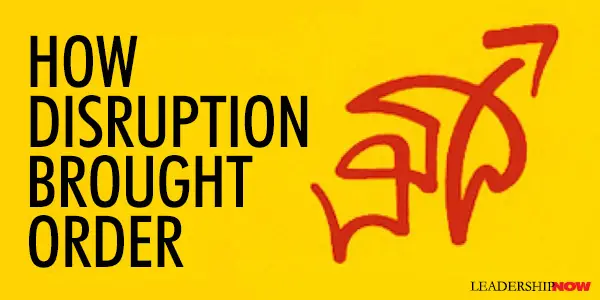
IN TIMES LIKE THIS we need to rethink what we are doing. Hit the reset button. Jean-Marie Dru’s prescription may be just the thing you need. Dru is the President and CEO of TWBA/Worldwide and author of How Disruption Brought Order, calls it Disruption. Disruption is “breaking with the status quo, refusing given wisdom, and finding unexpected solutions. We believe that the best way to help our clients grow their businesses is most often through strategies that involve rupture.” In describing marketing campaigns for Nissan (Shift), Adidas (Impossible is Nothing), Apple (Think Different), and others, he shows how Disruption asks the public to see the brand in a new light and thereby refresh, transform and reinvent it. But, it’s not limited to marketing and advertising. It has application to both your business and your thinking. “If you change nothing within a company you are sure to fail. As you also will if you try to change everything. The key to success lies within your ability to determine the fine line between what must change and what you must not. Fiona Clancy, the TWBA Disruption Director, summaries it this way: Disruption Is: • Being endlessly curious • Keeping an open mind • Looking for new beginnings with larger futures • Anticipating the future without fully expecting it • Accelerating change to your client's advantage • Recognizing patterns of success and building on them • Being creative ahead of the usual agency creative process (Creative is not a department.) • Turning intuition into a discipline, but without devaluing intuition • Gaining stability from going somewhere fast • Being in control rather than controlling • Anticipating change rather than defending against it • Questioning the way things are: imagining the way things could be Disruption Is Not: • Change for change’s sake • Upsetting the client’s organization • A particular creative style • Throwing away the past • Being deliberately wacky • Limited to advertising   
Posted by Michael McKinney at 03:01 PM

Jean-Marie Dru On Leadership
I do not believe much in natural leadership. The majority of chief executives I know were not necessarily destined for that path. They have been molded by the events they have lived through and the people they have met. The concept of leadership thus evolves into a much narrower question: How can you make sure you will be in the right place at the right time? To people wishing to enter the advertising business, I always explain that the first quality they will need is tenacity. Mere talent is not much use in the face of the countless obstacles that will get in the way of the best performance. Success is born of determination rather than just ambition. Ambition relates to strategy, whereas determination is linked to execution. Adapted from How Disruption Brought Order by Jean-Marie Dru
Posted by Michael McKinney at 09:08 AM
01.15.09

Living Within the Lie
BRITISH economist John Kay wrote in the Financial Times about the power of words to send us off into the wrong direction. More specifically, weasel words. There are some good thoughts here. Here is an excerpt: In western liberal democracies, no one exhibits slogans calling on the workers to unite. But you see similar displays in reception areas of businesses and even in government offices. They urge us to pursue excellence, to delight our customers, to be wholehearted in our embrace of change. Employees place these exhortations on desks and walls with the same resignation as the Czech greengrocer. The modern analogue of the address to the party congress is the business speech, in which tired clichés relentlessly follow each other, to similarly sycophantic applause.
Posted by Michael McKinney at 09:33 AM
01.14.09

lead:ology - Leadership: Whence It Came, Where It Went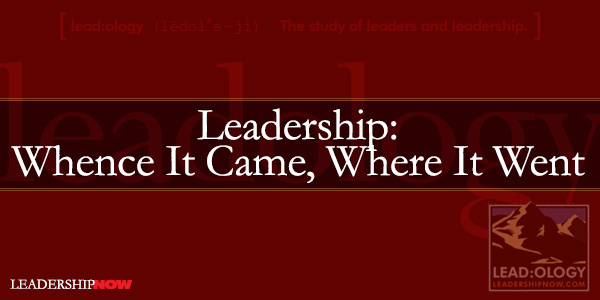
The earliest practitioners knew in principle what we know today. We aren’t the first to have learned how to lead, but in no other time have we tried to quantify it like we do today. Our scientific approach and thinking, while of great value, has really only added to our understanding of the why. Though we are drawn to binary reasoning and absolutes, leadership does not lend itself to that kind of thinking nor is it practiced that way. It is not rigid in nature. In the study of leadership as in much else, complexity is used to hide the truth rather than reveal it. The general principles of human behavior are not complex and are available to everyone. For some, it seems only right that something so important should be shrouded in mystery. We would be well advised not to make the simple complex. Leadership creates ample opportunity for nuances of thought to be displayed in other ways. At the same time, while leadership is not complex, it isn’t easy. Make no mistake. Leadership is hard. It is fashionable to raise leadership above the common man, yet it is in the common man that leadership resides and from the common man, that leadership must rise to meet the challenges of the time. Leadership is common to us all—men and women—if we will but choose it. Where are all the leaders? This is a persistent question. Actually, leaders are all around us. More often the problem we are lamenting is the lack of character we need in our leaders; the need for selflessness. Leaders reflect the society from which they come. If we don’t like what we see, we have to grapple with the fact that we are rewarding, nourishing and displaying the wrong behaviors in our homes, our schools, and our churches. We need to take a hard look at these crucibles were our leaders are made. It is silly to endlessly attack what we have produced and do nothing about the source of the problem. We need to get the fundamentals right. Poor leadership is a self-inflicted wound. At the same time, we as followers are a fickle lot. We don’t always feel we need leaders. When times are difficult and the choices not so clear, we clamor for someone to lead us. When times are easy, we are ambivalent towards leadership. We would prefer to have no one telling us what we should do, guiding us to make distinctions or inspiring us to be more than we are. We like things just the way they are. Nothing more consistently troubles the human mind than to be presented with a new direction when things are going well. This human tendency no doubt led Peter Drucker to observe that leadership is a foul-weather job. We want a leader to save us; to take away the discomfort. But a great leader never does. A great leader never does for people what they can and should do for themselves. A great leader guides, demonstrates direction, and provides encouragement. If history teaches us anything, we learn that leadership is temporary and so it must be constantly renewed both individually and collectively. From history, we also see how the context of leadership changes and so then its form must also adapt. Experiencing leadership is a lot easier than doing leadership. It’s more comfortable to push it off on someone else than to expose ourselves by taking up the task. But it is a task we all must embrace at some level if we are to create a future for ourselves and others. Find your future in your present and let your passion and the needs of those around you, be your guide.
Posted by Michael McKinney at 01:12 AM
01.13.09

The Block of Wood That Became the First Sony Walkman
IN The Illusion of Leadership, Piers Ibbotson explains the difference between the creative and the managerial style of leadership. “Creative leadership thinks as it works. One of the fundamentals of the creative style is that you have a leader who can frame the task so that the led will be delighted to attack it and bring their imaginations with them as they do….you cannot define in detail the outcome.” He cites the following example of the development of the Sony Walkman:

Posted by Michael McKinney at 08:55 AM
01.12.09

Leading for Creativity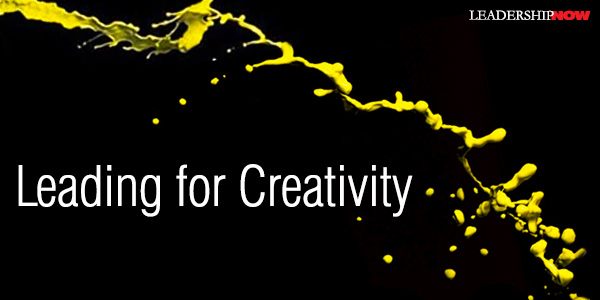
IN A press release for Gosford Park, director Robert Altman explains, "The characters in Gosford Park had very few mandates. There are certain things that happen in the plot, and most actors will read the script and come prepared, but I don't say, 'This is the way to do it.' They have the whole sphere of their character in their head, and I don't want to cut it down to a little slice of pie. There are plenty of people [on a project] that keep track and see that we get through plot points, but if I'm just shooting to get that stuff in, then I'm looking for the wrong thing. What I really want to see from an actor is something I've never seen before, so, I can't tell them what it is. We normally shoot a few takes, even if the first one was terrific because what I'm really hoping for is a 'mistake.' I think that most of the really great moments in my films were not planned. They were things that occurred and we thought, 'Wow, look at that - that's something we want to keep!'" This dovetails with what Piers Ibbotson writes in The Illusion of Leadership. “The best directors did not know in detail what was going to happen in the play until they saw me do it. They didn’t tell me what I should do because they didn’t know. This ability to carry on being in charge and maintaining the trust of a company, when you and I do not and cannot know in detail how things will turn out, seems to me to be at the heart of creative leadership in business and the arts.”Because, Ibbotson believes, that people outside the arts generally misunderstand the creative process and the behaviors necessary to encourage creative teamwork, they don’t put a culture in place that promotes group creativity. It doesn’t come from competitive individualism and it needs boundaries and constraints. “The creative juices get going when you are up against a boundary, at the edge of what is acceptable, possible, or known.” Ibbotson presents the leader as director. He explains how they release creativity and optimize innovation, how they give space to the creative drives of performers but still maintain an outcome that is true to the original vision and delivered on time and within budget. If the right culture is in place, innovation is not an issue. 
Posted by Michael McKinney at 01:20 AM
01.09.09

The Accountable Leader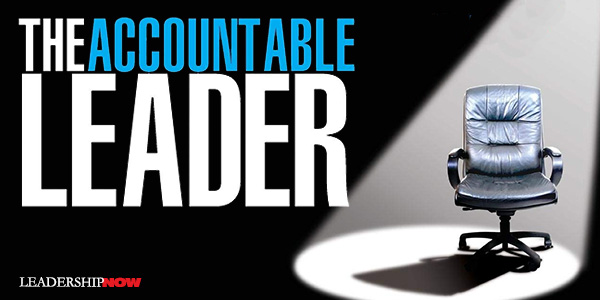
BRIAN DIVE tells us in The Accountable Leader that many organizations have difficulty developing leaders and fostering effective leadership because they have never considered the context they must lead in. The organization must be structured, Dive contends, so that all leadership roles from top to bottom have well-defined decision rights. In other words, accountability needs to be structured into the very fiber of the organizational architecture at all levels. Accountability, organizational design, and leadership are three inextricably linked factors. An organization is in flow, or in a state of equilibrium, when the required number of management layers (vertical architecture) matches the effective reach (or span of control) over the relevant resources that the organization needs in order to achieve its purpose. After briefly explaining the problem and the key concepts used in correcting it, he begins to present the practical application of his ideas for creating accountability within an organization. He addresses questions such as: How many layers of management are necessary? How do leadership requirements change at different levels? How can potential leaders be identified? How can they be developed? How should people be rewarded?Beyond the useful correctives to organization architecture and accountability, Dive also makes an important distinction between Managerial leadership (operational in nature) and Strategic leadership (changing the organization) for leadership development. Each requires different abilities and approaches in decision-making style and accountability. “Operational accountability is ensuring that existing assets and resources continue to perform better. The resources are given. Problem-solving remains related to actual events, rather than the abstract.” With Strategic accountability, “problem-solving moves into the abstract domain. Solutions have to be found that require mental modeling, as they do not yet physically exist.” On leadership development, Dive writes that “many organizations still confuse values, skills, and competencies” and “it is one of the main reasons why so many leadership development programs fail.” Here are several thoughts in this regard: Although values and skills, especially technical skills, play an important role in who should work in an organization, they are not reliable guides for the assessment of potential and who should be promoted. 
Posted by Michael McKinney at 09:01 AM
01.08.09

One More Time: Resilience is Key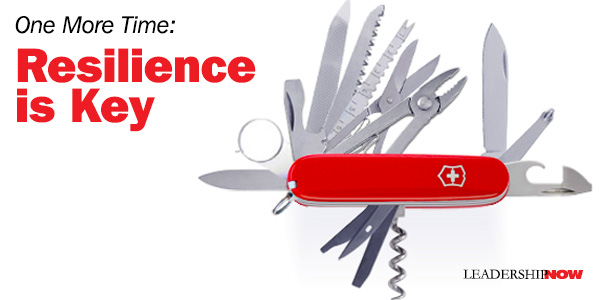
IN The Knack, a book for entrepreneurs, Norm Broadsky and Bo Burlingham respond to the question, “What does it take to be a successful entrepreneur?” The most important quality is resilience. “I’m talking about the ability to bounce back from failure, to turn around a bad situation, to profit from your mistakes. They continue: That’s because everybody makes mistakes, plenty of them. What’s more, we keep making them as long as we’re in business. Sure, we like to think we’ll eventually get so smart we won’t make mistakes anymore. Forget about it. You’ll never stop making mistakes. Hopefully, the new ones won’t be the same as the old ones, but they’ll be equally painful. They’ll bug you just as much. They’ll make you just as mad. As upset as you get, however, it’s important to bear in mind that failure is still the best teacher around. You’ll do fine as long as you’re open to the lessons it’s trying to teach you. And a concluding thought from an article in the New York Times, Innovation Should Mean More Jobs, Not Less. Geoffrey A. Moore, author of Dealing with Darwin, comments: “America is probably the best culture in the world at failing,” he said. “We’re willing to navigate in a fog and keep moving forward. Our competitive advantage tends to be at the fuzzy front end of things when you’re still finding your way. Once the way has been found, we’re back at a disadvantage.” 
Posted by Michael McKinney at 12:29 AM
01.06.09

Strengths Based Leadership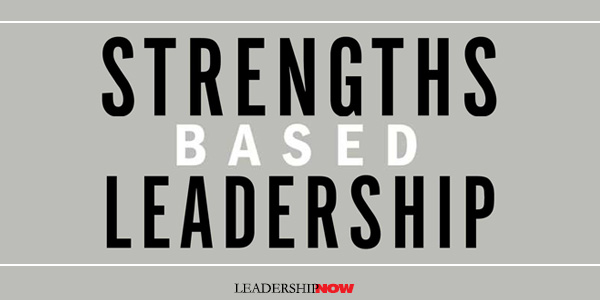
THE FACT IS, many leaders do not really know their strengths. Not only does this lack of self-awareness bring about unintended consequences to one’s behavior, but also it can lead to disengaged employees and undue stress in the workplace and beyond. Donald Clifton remarked: What great leaders have in common is that each truly knows his or her strengths – and can call on the right strength at the right time. This explains why there is no definitive list of characteristics that describes all leaders.In Strengths Based Leadership, authors Tom Rath and Barry Conchie present a new leadership version of Gallup’s StrengthsFinder assessment. (An access code is included with the book so you can take the new assessment online.) The assessment is design to help you see how your top five strengths fit into their newly identified four domains of leadership strengths: Executing strengths, Influencing Strengths, Relationship Building strengths, and Strategic Thinking strengths. You will find that this knowledge is useful in creating well-rounded teams. As they note, "Although individuals need not be well-rounded, teams should be." Unique to this book is a study of 10,000 followers. When they asked them why they followed, four basic wants and needs emerged: trust, compassion, stability and hope. Once you have identified your strengths, they will give you specific suggestions for meeting those needs. The idea of strengths-based leadership is not to ignore your weaknesses as some have mistakenly misunderstood. But the emphasis for any leader should be a deep understanding of what they bring to the table and not trying to be something they are not. Rath and Conchie write: The most effective leaders know better than to try to be someone they are not. Whenever they spot an opportunity, they reinvest in their strengths…. Leaders stay true to who they are – and then make sure they have the right people around them. Those who surround themselves with similar personalities will always be at a disadvantage in the long run to those who are secure enough in themselves to enlist partners with complementary strengths. 
Posted by Michael McKinney at 11:46 PM
01.01.09

First Look: Leadership Books January 2009Here's a look at some of the best leadership books to be released in January.




Posted by Michael McKinney at 12:03 AM
|
BUILD YOUR KNOWLEDGE


How to Do Your Start-Up Right STRAIGHT TALK FOR START-UPS 
Grow Your Leadership Skills NEW AND UPCOMING LEADERSHIP BOOKS 
Leadership Minute BITE-SIZE CONCEPTS YOU CAN CHEW ON 
Classic Leadership Books BOOKS TO READ BEFORE YOU LEAD |
| ||||||||||||||||||||||||||||||||||||||||||||||||||||||||||||||||||||||||||||||||||||||||||||||||||||||||||||||||||||||||||||||||||